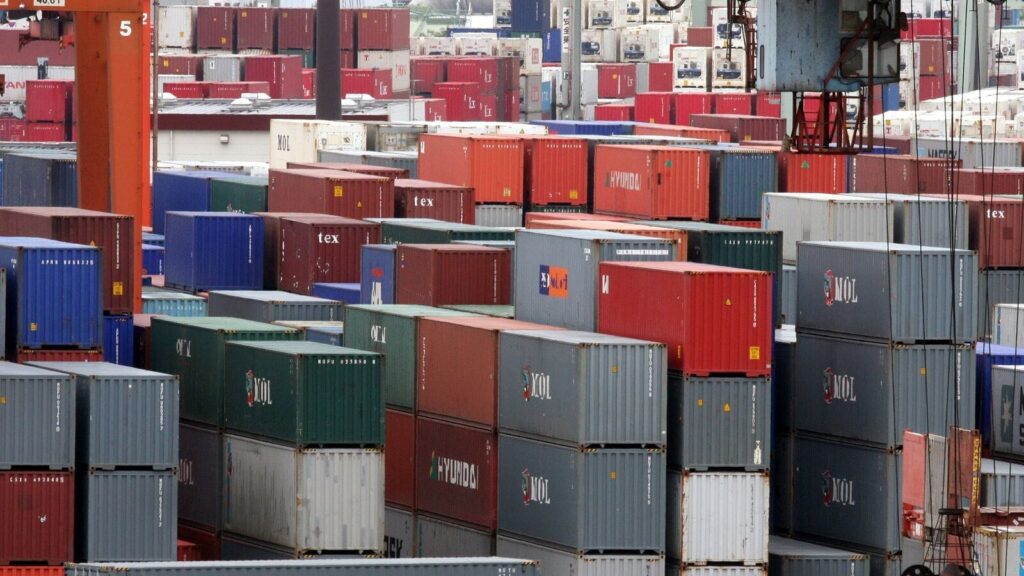
As the world braces for US President Donald Trump’s ‘Liberation Day’ tariff plan on April 2, India is working on different scenarios to counter the possible fallout of reciprocal tariffs on its key trading partners.
The impact of these tariffs may vary from sector to sector and India’s commerce ministry is preparing different scenarios, reported news agency PTI, citing sources.
Trump has said that April 2 will be ‘Liberation Day’ as he plans to announce reciprocal tariffs to bring down America’s trade deficit and promote manufacturing.
However, it is still unclear about the quantum of tariffs and how they will be imposed – whether at the product level, sector level, or country level.
High import duties on American goods
According to the US Trade Representative’s (USTR) National Trade Estimate (NTE) Report 2025, India maintains “high” import duties on a wide range of American goods such as agricultural items, drug formulations, and alcoholic beverages, besides imposing non-tariff barriers.
Presently, US goods face a weighted average tariff of 7.7 per cent in India, while Indian exports to the US attract only 2.8 per cent, leading to a 4.9 per cent difference.
The Indian exports to the US are spread across 30 sectors, with six in agriculture and 24 in industry. Each sector faces different tariff impacts.
The US accounts for about 18 per cent of India’s total goods exports, 6.22 per cent in imports, and 10.73 per cent in bilateral trade.
Hardest-hit Indian sectors
According to the think tank GTRI, the following sectors are expected to be hit the hardest after Trump’s reciprocal tariffs.
- Fish, meat, and processed seafood, with $2.58 billion in exports face a 27.83 per cent tariff differential.
- Dairy products worth $181.49 million exports to be severely affected by a 38.23 per cent tariff differential.
- Processed food, sugar, and cocoa exports worth $1.03 billion will be affected with a 24.99 per cent tariff hike.
- Alcohol, wines, and spirits face the highest tariff hike at 122.10 per cent.
- Edible oils, with $199.75 million in exports, face a 10.67 per cent tariff.
- Cereals, vegetables, fruits, and spices, valued at $1.91 billion, face a 5.72 per cent tariff differential.
- Live animals and animal products face a 27.75 per cent tariff differential on $10.31 million in exports.
- The pharmaceutical sector, India’s largest industrial export, worth $12.72 billion, faces a 10.90 per cent tariff differential.
- Diamonds, gold, and silver with $11.88 billion in exports will attract a 13.32 per cent tariff hike.
- Electrical, telecom, and electronics exports worth $14.39 billion face a 7.24 per cent tariff.
- Machinery, boiler, turbine, and computer exports valued at $7.10 billion will see a 5.29 per cent tariff hike.
- Chemicals (excluding pharma) worth $5.71 billion will be affected by a 6.05 per cent tariff.
- Textiles, fabrics, yarn, and carpets, with $2.76 billion in exports, face a 6.59 per cent tariff.
- Rubber products, including tyres and belts, worth $1.06 billion, will face a 7.76 per cent tariff.
- Ceramic, glass, and stone products with $1.71 billion in exports will face an 8.27 per cent tariff.
- Footwear, with $457.66 million in exports, faces a high 15.56 per cent tariff differential.
Both nations are also working on a bilateral trade agreement to promote two-way commerce and investments.
Non-tariff barriers
Indian companies have flagged certain non-tariff barriers which they face in the US, the PTI report said, citing sources.
The barriers include the US banning the export of wild-caught shrimp from India on the grounds that Indian trawler vessels were not using Turtle Excluder Devices; private standards of American companies; and high registration costs for sectors like pharma.
To address these issues, the ministry is developing a portal for registering non-tariff barriers faced by Indian exporters and also taking up with the countries concerned for their resolution.





